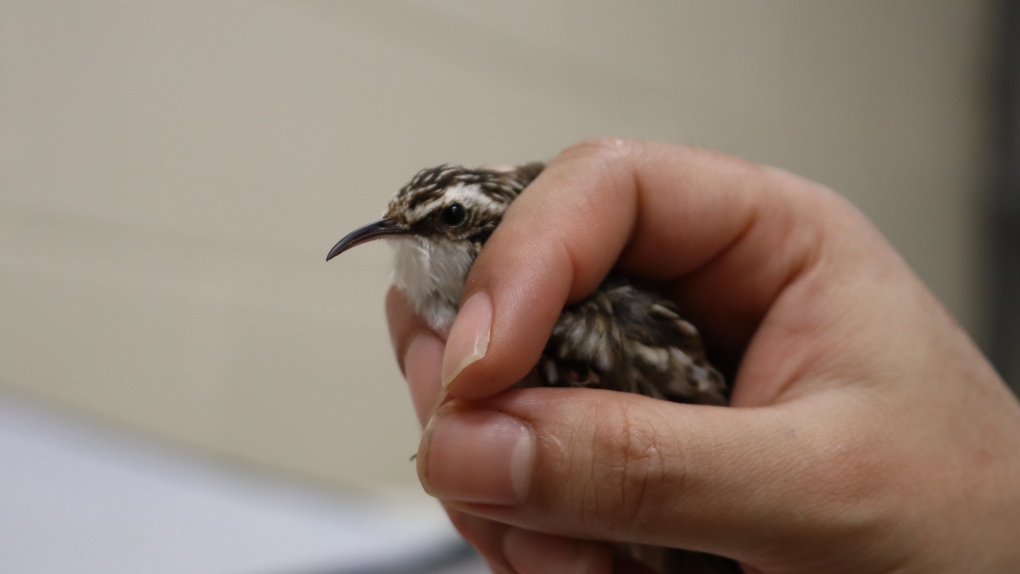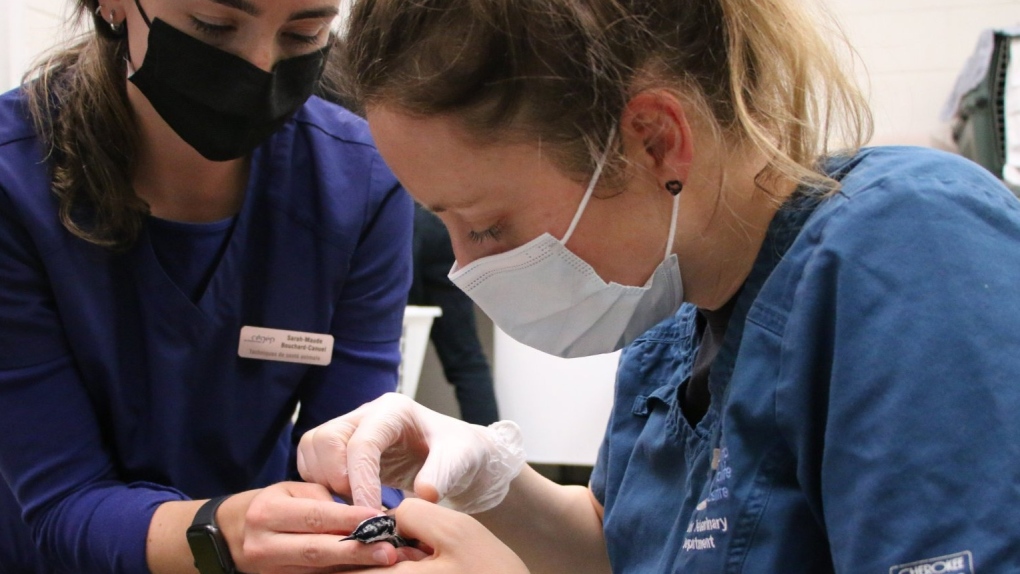Millions of birds die in Canada at this time of year. Here's what you can do
Thousands of birds in Toronto fly into windows and die at this time of year as they journey across the last stretch of their migration, deaths that the city says are completely preventable.
“We're looking at animals that have essentially head trauma,” Dr. Heather Reid, head veterinarian at Toronto Wildlife Centre (TWC), said.
These birds are part of an estimated 25 million that die in Canada each year from flying into windows.
Birds can’t appreciate glass, or reflective surfaces, which appear to project the outdoors, Reid explained. As a result, they strike the surface and in some cases, die.
The seasonal uptick of these deaths is tied to the current migration period, which began earlier this month and stretches till the end of May, according to the City of Toronto. The journey spans thousands of kilometres, from central and South America, to northern breeding grounds.
Already, Reid said TWC has 40 birds in their care, recovering from head trauma related injuries.
“They're being treated for their injuries or any of the broken bones or shock. They'll be put on oxygen therapy if needed. They'll be given the proper medications, anti-inflammatories, we're basically managing their head trauma and their eye injuries and any fractures that they have,” Reid said.
 A tiny Brown Creeper recovers in the care of Toronto Wildlife Centre (TWC). Beyond preventing animal suffering, birds play vital roles in our cities, including pest control, pollination, and seed dispersal, making their survival key in maintaining a healthy ecosystem, according to the government of Canada’s prevention guidelines.
A tiny Brown Creeper recovers in the care of Toronto Wildlife Centre (TWC). Beyond preventing animal suffering, birds play vital roles in our cities, including pest control, pollination, and seed dispersal, making their survival key in maintaining a healthy ecosystem, according to the government of Canada’s prevention guidelines.
Most birds migrate at night, using the stars and the moon to guide their path, which becomes a problem the closer they get to urban centres.
“They end up getting drawn towards the lights of our cities and our buildings and they become so confused, and they get trapped in the corridors of cities, they often become exhausted, and that's why we see so many birds becoming injured,” Reid said.
Once TWC rehabilitates the birds, and they’ve recovered from their injuries, they practice flying in outdoor aviaries before they are released on the far side of the city to avoid navigating the urban maze.
 The Toronto Wildlife Centre medical team treats a bird after colliding with a window (TWC). The City of Toronto is encouraging the public to turn off unnecessary lights at night, internally and externally, when possible to reduce migratory bird deaths.
The Toronto Wildlife Centre medical team treats a bird after colliding with a window (TWC). The City of Toronto is encouraging the public to turn off unnecessary lights at night, internally and externally, when possible to reduce migratory bird deaths.
To set an example, last December, Toronto city council decided to turn off unnecessary lights in city buildings during migration season.
TWC suggests covering a window with a pattern, or adding visual markers that can be spread across the entire surface, to make it more visible to birds.
If you come across an injured bird, TWC recommends gently putting a tea towel or cloth over top, placing the bird in a paper bag or small cardboard box and contacting a licensed wildlife rehabilitator.
CTVNews.ca Top Stories

Can the Governor General do what Pierre Poilievre is asking? This expert says no
A historically difficult week for Prime Minister Justin Trudeau and his Liberal government ended with a renewed push from Conservative Leader Pierre Poilievre to topple this government – this time in the form a letter to the Governor General.
'I'm still thinking pinch me': lost puppy reunited with family after five years
After almost five years of searching and never giving up hope, the Tuffin family received the best Christmas gift they could have hoped for: being reunited with their long-lost puppy.
Wrongfully convicted N.B. man has mixed feelings since exoneration
Robert Mailman, 76, was exonerated on Jan. 4 of a 1983 murder for which he and his friend Walter Gillespie served lengthy prison terms.
Pickup truck driver killed by police after driving through Texas mall and injuring 5
A pickup truck driver fleeing police careened through the doors of a JCPenney store in Texas and continued through a busy mall, injuring five people before he was fatally shot by officers, authorities said.
Unifor members ratify new agreement with Canadian National Railway
Unifor said on Sunday that its members at Canadian National Railway (CN Rail) have ratified a new four-year collective agreement, averting a potential strike action.
6 adults, 4 children taken to hospital following suspected carbon monoxide exposure in Vanier
The Ottawa Paramedic Service says ten people were taken to hospital, one of them in life-threatening condition, following an incident of suspected carbon monoxide exposure Sunday morning in the neighbourhood of Vanier.
Two U.S. Navy pilots shot down over Red Sea in apparent 'friendly fire' incident, U.S. military says
Two U.S. Navy pilots were shot down Sunday over the Red Sea in an apparent 'friendly fire' incident, the U.S military said, marking the most serious incident to threaten troops in over a year of America targeting Yemen's Houthi rebels.
Big splash: Halifax mermaid waves goodbye after 16 years
Halifax's Raina the Mermaid is closing her business after 16 years in the Maritimes.
Second body recovered from site of B.C. landslide
The second resident of a home that was destroyed by a landslide in Lions Bay, B.C., last weekend was found dead Saturday, officials confirmed.
































